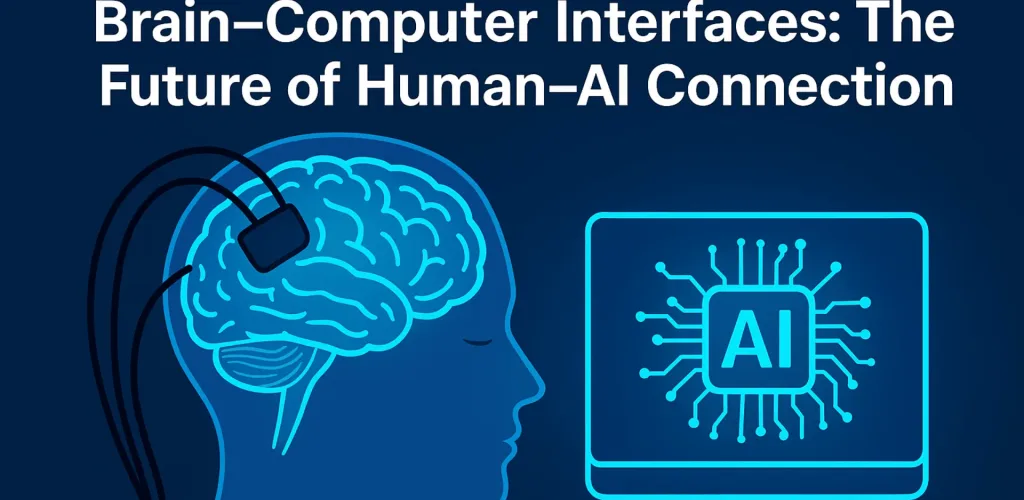
What Is a Brain–Computer Interface?
A Brain–Computer Interface (BCI) is a system that creates a direct communication pathway between the human brain and an external device, such as a computer or robotic arm. Instead of relying on a keyboard, mouse, or voice commands, BCIs use brain signals to control technology—making human–AI interaction faster and more natural.
This technology has two main types:
Invasive BCIs: Require surgical implants in the brain (used in medical research and clinical trials).
Non-invasive BCIs: Use sensors placed on the scalp (like EEG headsets) to detect brain activity without surgery.
Why BCIs Are Making Headlines in 2025
The race to dominate brain–computer technology is heating up, with billionaires and AI pioneers at the center:
Elon Musk’s Neuralink – Currently running human trials with implantable devices designed to restore mobility, help treat paralysis, and eventually merge human intelligence with AI.
Sam Altman’s Merge Labs – A new competitor valued at nearly $1 billion, aiming to build high-bandwidth neural interfaces that go beyond healthcare into everyday computing.
This rivalry is pushing BCI technology out of the lab and into mainstream conversation.
Real-World Applications of BCIs
1. Medical Breakthroughs
Helping patients with paralysis control prosthetic limbs.
Restoring speech in individuals who’ve lost their ability to talk.
Assisting stroke survivors in regaining motor function.
2. Everyday Human–AI Interaction
Typing messages or emails using only your thoughts.
Navigating the internet hands-free.
Designing music, art, or software by directly transmitting ideas to a computer.
3. Work and Creativity
Boosting productivity by cutting out keyboards and screens.
Accelerating research by enabling faster data processing.
Unlocking new forms of creative expression through direct thought-to-digital translation.
Benefits of Brain–Computer Interfaces
Accessibility: Life-changing for people with disabilities.
Speed: Thought-level interaction could be 100x faster than typing or tapping.
New Possibilities: Could revolutionize education, gaming, healthcare, and design.
Risks and Ethical Questions
Privacy Concerns: If your brain data is recorded, who owns it—you or the company?
Security: Could hackers manipulate or steal brain signals?
Health Risks: Surgical implants carry medical risks; non-invasive BCIs are safer but less accurate.
Social Impact: BCIs could create a divide between enhanced and non-enhanced humans.
The Future of Brain–Computer Interfaces
The future of BCIs sits at the intersection of AI, neuroscience, and ethics. With Neuralink and Merge Labs leading the race, the next decade may see:
Consumer-grade BCI devices for everyday use.
AI-powered BCIs that personalize experiences in real time.
Policy debates around privacy, consent, and ownership of mental data.
Whether you see it as the next great leap or a potential risk, Brain–Computer Interfaces are set to reshape the way humans interact with AI, technology, and each other.

